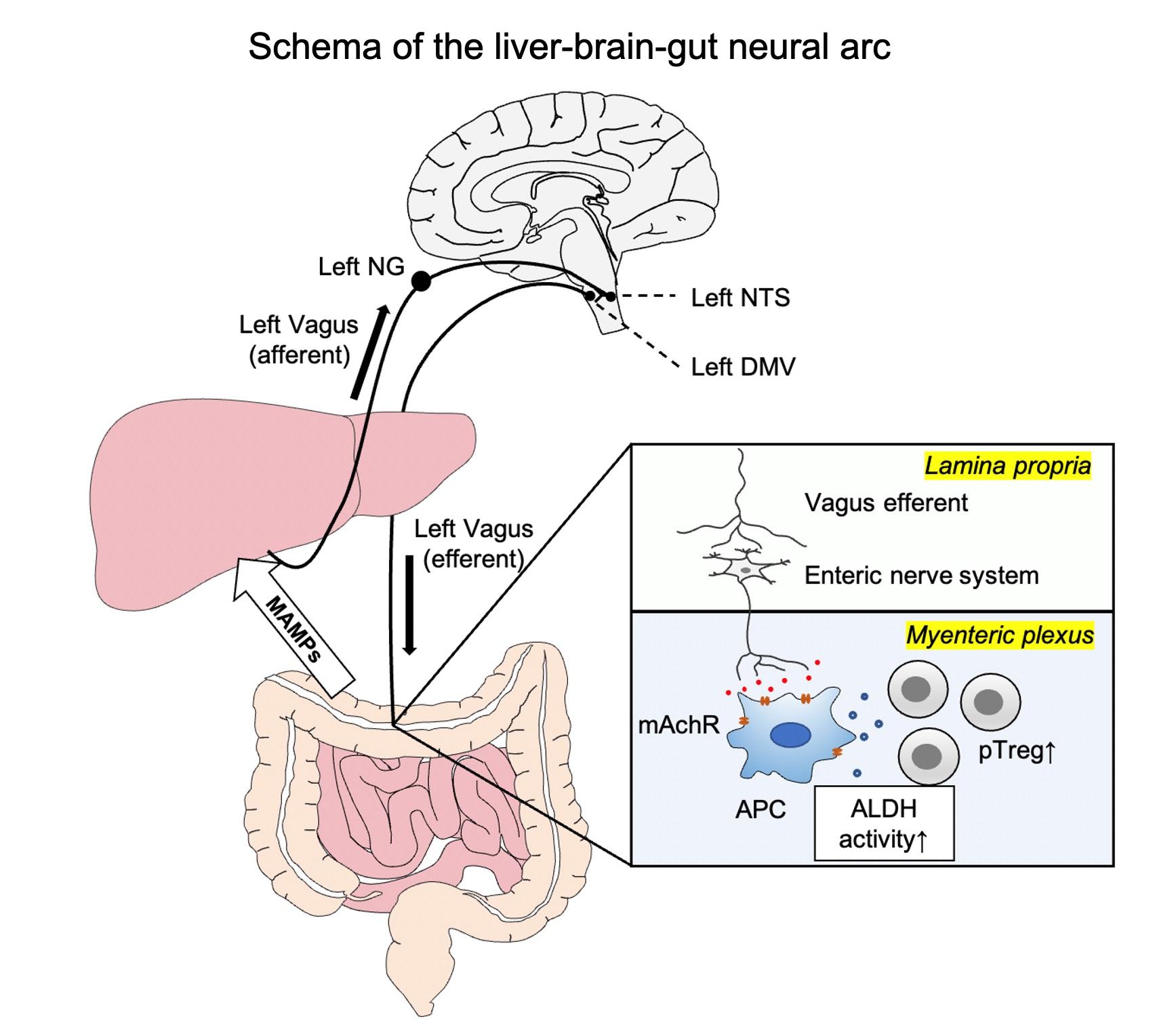Organ and brain crosstalk: The liver-brain axis in gastrointestinal, liver, and pancreatic diseases

Title: Organ and brain crosstalk: The liver-brain axis in gastrointestinal, liver, and pancreatic diseases
Authors: Yuta Matsubara, Hiroki Kiyohara, Toshiaki Teratani, Yohei Mikami, and Takanori Kanai
Journal: Neuropharmacology, Vol: 205 (2022)
DOI: 10.1016/j.neuropharm.2021.108915
Abstract:
The liver is the largest organ in the human body and is responsible for the metabolism and storage of the three principal nutrients: carbohydrates, fats, and proteins. In addition, the liver contributes to the breakdown and excretion of alcohol, medicinal agents, and toxic substances and the production and secretion of bile. In addition to its role as a metabolic centre, the liver has recently attracted attention for its function in the liver-brain axis, which interacts closely with the central nervous system via the autonomic nervous system, including the vagus nerve. The liver-brain axis influences the control of eating behaviour in the central nervous system through stimuli from the liver. Conversely, neural signals from the central nervous system influence glucose, lipid, and protein metabolism in the liver. The liver also receives a constant influx of nutrients and hormones from the intestinal tract and compounds of bacterial origin via the portal system. As a result, the intestinal tract and liver are involved in various immunological interactions. A good example is the co-occurrence of primary sclerosing cholangitis and ulcerative colitis. These heterogeneous roles of the liver-brain axis are mediated via the vagus nerve in an asymmetrical manner. In this review, we provide an overview of these interactions, mainly with the liver but also with the brain and gut.
Related Articles:
- Vagal mechanisms as neuromodulatory targets for the treatment of metabolic disease. Annals of the New York Academy of Sciences, Vol. 1454, Issue: 1 (2019). DOI: 10.1111/nyas.14182.
- A Neural Circuit for Gut-Induced Reward. Cell, Vol. 175, Issue 3, pp. 665-678.e23 (2018). DOI: 10.1016/j.cell.2018.08.049
- The liver-brain-gut neural arc maintains the Treg cell niche in the gut. Nature, Vol. 585, pp. 591-596 (2020). DOI: 10.1038/s41586-020-2425-3.





